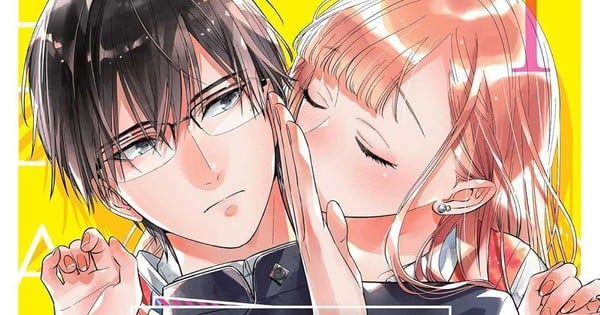Curated From www.animenewsnetwork.com Check Them Out For More Content.
Ah, high school love – when some teens begin navigating the waters of relationships and their physical components, eager to learn what their bodies can do and do it with the people they’re crushing on. There are shoals and sharks in those waters but for most manga teens, they’re nothing that can’t be overcome with the Power of True Love™. Or…can they? That’s what Yuri finds herself wondering as she embarks on her first relationship because nothing in her pop culture landscape has prepared her for dealing with a boyfriend whose family comes with a strict set of rules he’s dedicated to following.
This is the crux of the plot in Aki Kusaka‘s shoujo romantic comedy Let’s Do It Already!. The story follows two high school students at single-gender schools as they embark on their nascent romance. The girl is Yuri, a fairly ditzy but deeply romantic young woman who becomes fascinated by a boy she sees on the train to school every morning. He turns out to be Keiichiro, a student at the facing (and much more prestigious) boys’ school, and the feeling is mutual. As they observe and talk to each other, they realize that neither is exactly as school stereotypes advertise. Things seem to be going along well, with the volume opening on their mutual confession and then the fly in the ointment is revealed: Keiichiro is the son of a family with two generations of powerful politicians, and he’s expected to conduct himself in a certain way…a way that means “no touching girls” until he turns eighteen.
To make this premise work, the characters are more exaggerated versions of themselves than we might see in another story. Keiichiro is serious to a fault, drawing up contracts to manage his life and to work around issues with his family; at one point, he has to write a request to get a cell phone and come up with just the right phrasing to have “accounting” approve his request. Yuri is painted as going a little beyond “flaky” into the border between that and “unintelligent;” at one point isn’t sure what a prime minister is. This contrast between the two of them is set up to make it more of an opposites attract romance, but at times it goes too far and veers away from funny and into nearly mean, particularly where Yuri is concerned. To a degree, Kusaka seems to be playing with tropes about girls who bleach their hair, while Keiichiro is an exaggeration of the megane-kun trope. It’s not surprising when Kusaka mentions that this is her first series because it’s clear that things could use a little more polish to make them shine.
It’s important to note that, despite how the covers frame things, Keiichiro wants to move things ahead just as much as Yuri does. He’s uncomfortable with her spontaneous hugs and attempts to kiss him, but that’s because he’s aware of the consequences for himself. He’s clearly at least a little afraid that he’ll be removed from her sphere if his family figures out what’s going on, it turns out to be a very valid concern by the end of the volume. He’s not rebuffing his girlfriend because he’s a jerk; he’s actively trying to find ways around the family precepts to make things better for them. Whether that’s figuring out the blind spots in the heavily monitored family car or coming up with excuses for his omnipresent security details (one of the best gags is how he has two: one for when he’s behaving and one for when he’s not), he’s determined to make sure that he and Yuri can be together in ways that they both want. Nothing shows this quite like when he goes back to look up when the rules were first written down, which both affords him some wiggle room based on the differences between how age was counted in the Meiji era versus how it’s measured in the Reiwa and shows that he has a brilliant legal mind.
The English translation does a very nice job of showing the differences in how Yuri and Keiichiro speak and allowing readers to point out their differing social classes, but in a way that doesn’t feel aggressive or irritating. There’s a sense that they both want to move closer to each other in more ways than merely physical, and their speech patterns help outline that. The art is very attractive, if a bit heavy on the screen tones; it has more of the in-house look of a LaLa title than one from Margaret, which isn’t a mark of quality, just an observation. Although the pages are busy, they’re still easy to read, and it feels like by the time we hit volume nine (the final), we’ll have seen Kusaka improve her craft because we can even start to see that just within this book.
Let’s Do It Already!‘s first volume is frothy. There’s a clear story with some interesting emotional implications underneath because Keiichiro is starting to chafe at his family’s restrictions, but this still reads like a fluffy shoujo romance, complete with potential no-chance rival showing up in the final pages of the book. It’s less of a sexy comedy than its copy implies, but it’s still a fun read if you’re a genre fan.

